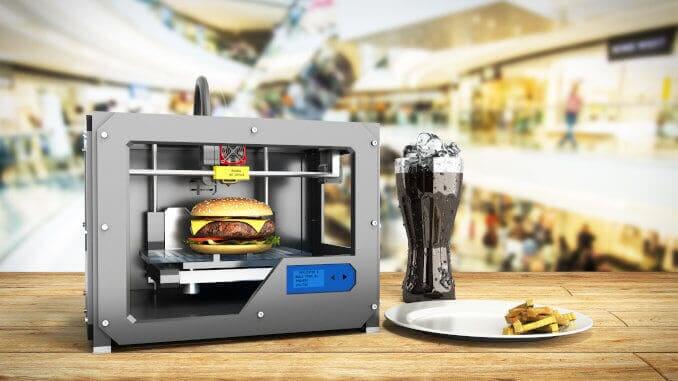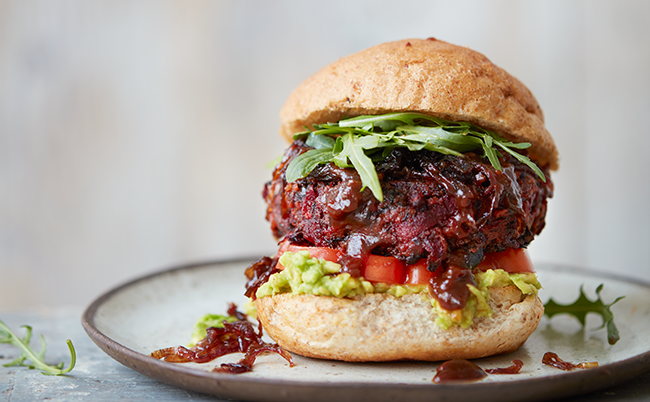$11+ Bn 3D Food Printing Markets: Extrusion, Powder Binding Deposition – Global Forecast to 2030 – ResearchAndMarkets.com – vegconomist

DUBLIN–(BUSINESS WIRE)–The “3D Food Printing Market by Offering, Printing Method (Layer-by-layer, Mold-based), Printing Technology (Extrusion, Powder Binding Deposition), Ingredient Form (Pastes and Purees, Powdered Ingredients), End User, and Geography – Global Forecast to 2030” report has been added to ResearchAndMarkets.com’s offering.
With a projected value of $11.3 billion by 2030 and a remarkable CAGR of 50.2% from 2023 to 2030, the 3D food printing market is experiencing significant growth.
The market’s expansion is primarily driven by the increasing demand for gourmet food and the adoption of 3D printing technology to produce plant-based meat alternatives and reduce food wastage. However, challenges such as long processing times and the perceived lack of flavor and texture compared to traditionally manufactured food products pose limitations.
Nonetheless, the food & hospitality industries’ growing interest in 3D food printing technology and ongoing research initiatives to develop innovative models present promising opportunities for market growth.
Based on offering, the 3D food printing market is segmented into machines & accessories, software, and services. In 2023, the machines & accessories segment is expected to account for the largest share of the 3D food printing market.
The large market share of this segment is attributed to the wider usage of 3D printing technology in food industries for personalized nutrition, automated cooking, and reduction in food wastage, among other applications. Additionally, this segment is slated to register the highest CAGR during the forecast period.
Based on printing method, the 3D food printing market is segmented into layer-by-layer and mold-based. In 2023, the layer-by-layer segment is expected to account for the larger share of the 3D food printing market.
The large market share of this segment is attributed to the method’s wide usage in different applications, its ability to design complex-shaped products, and easily add specific ingredients selected as per customer preferences. Additionally, this segment is slated to register the higher CAGR during the forecast period.
Based on printing technology, the 3D food printing market is segmented into extrusion, powder binding deposition, inkjet printing, and bio-printing. The extrusion segment is further sub-segmented into soft-materials extrusion, melting extrusion, and hydrogel-forming extrusion. The powder binding deposition segment is further sub-segmented into selective laser sintering, liquid binding, and selective hot air sintering and melting.
In 2023, the extrusion segment is expected to account for the largest share of the 3D food printing market. The large market share of this segment is attributed due to the technology’s ability to achieve the output of conventional food extrusion processing physically with digitalized designs and personalized nutrition control.
Also, extrusion is a digitally controlled, robotic construction process that can produce complex-shaped 3D food products. However, the powder binding deposition segment is projected to register the highest CAGR during the forecast period.
Based on ingredient form, the 3D food printing market is segmented into pastes and purees, powdered ingredients, and cells. The pastes and purees segment is further sub-segmented into dough, puree, jelly & frosting, mashed fruits & vegetables, cheese, and other pastes and purees. The powdered ingredients segment is further sub-segmented into sugar, chocolate powder, protein powder, flour, and other powdered ingredients.
In 2023, the pastes and purees segment is expected to account for the largest share of the 3D food printing market. The large market share of this segment is attributed to the ingredients’ structural properties and easy usage with 3D food printing technologies. Also, the increasing demand for customized paste and puree-based products supports the segment’s large market share. However, the powdered ingredients segment is projected to register the highest CAGR during the forecast period.
Based on end user, the 3D food printing market is segmented into restaurants, big-scale catering, bakeries & confectionaries, and other end users. The restaurants segment is further sub-segmented into QSR/fast food restaurants, casual dining restaurants, cafes, and fine dining/gourmet restaurants.
In 2023, the bakeries & confectionaries segment is expected to account for the largest share of the 3D food printing market. The large market share of this segment is attributed to the increasing demand for personalized meals and luxury dining and the rising consumption of plant-based meat products across the globe. However, the restaurants segment is projected to register the highest CAGR during the forecast period.
North America is expected to account for the largest share of the 3D food printing market, followed by Europe, Asia-Pacific, Latin America, and the Middle East & Africa.
The major factor driving the market’s growth in North America is the increasing technological progress in all aspects of food technology, rapidly rising awareness regarding 3D-printed and plant-based meat products, and the increasing demand for vegan alternatives to meat products.
Key questions answered in the report:
- Which are the high growth market segments in terms of offering, printing method, printing technology, ingredient form, end user, and country?
- What is the historical market for 3D food printing across the globe?
- What are the market forecasts and estimates from 2023-2030?
- What are the major drivers, restraints, and opportunities in the 3D food printing market?
- Who are the major players in the 3D food printing market, and what are their market shares?
- Who are the major players in various countries, and what are their market shares?
- How is the competitive landscape?
- What are the recent developments in the 3D food printing market?
- What are the different growth strategies adopted by major players operating in the 3D food printing market?
- What are the geographical trends and high growth countries?
- Who are the local emerging players in the 3D food printing market and how do they compete with the other players?
Market Insights
- Factors Affecting Market Growth
- Market Trends: Increased Emphasis on Product Customization Across Industries
- Technology Trends: Use of AI in 3D Printing
- Transformative Potential of 3D Food Printing
- Use Cases of 3D Food Printing
- Porter’s Five Forces Analysis
- Parameters of Textural Properties of Printed Products
- Regulations for 3D Food Printer Filaments
- Value Chain Analysis
Company Profiles (Company Overview, Financial Overview, Product Portfolio, Strategic Developments)
- 3D Systems Corporation (U.S.)
- TNO (Netherlands)
- Natural Machines (Spain)
- Wiiboox (China)
- byFlow B.V. (Netherlands)
- Dovetailed (U.K.)
- PancakeBot (U.S.)
- BeeHex LLC (U.S.)
- Print4Taste GmbH (Germany)
- Changxing Shiyin Technology Co. Ltd. (China).
Scope of the report:
3D Food Printing Market Assessment, by Offering
- Machines & Accessories
- Software
- Services
3D Food Printing Market Assessment, by Printing Method
- Layer-by-layer
- Mold-based
3D Food Printing Market Assessment, by Printing Technology
- Extrusion
- Soft-materials Extrusion
- Melting Extrusion
- Hydrogel-forming Extrusion
- Powder Binding Deposition
- Selective Laser Sintering
- Liquid Binding
- Selective Hot Air Sintering and Melting
- Inkjet Printing
- Bio-printing
3D Food Printing Market Assessment, by Ingredient Form
- Pastes and Purees
- Dough
- Puree
- Jelly & Frosting
- Mashed Fruits & Vegetables
- Cheese
- Other Pastes and Purees
- Powdered Ingredients
- Sugar
- Chocolate Powder
- Protein Powder
- Flour
- Other Powdered Ingredients
- Cells
3D Food Printing Market Assessment, by End User
- Restaurants
- QSR/Fast Food Restaurants
- Casual Dining Restaurants
- Cafes
- Fine Dining/Gourmet Restaurants
- Big Scale Caterings
- Bakery & Confectionaries
- Other End Users
3D Food Printing Market Assessment, by Geography
- North America
- U.S.
- Canada
- Asia-Pacific
- China
- Japan
- India
- South Korea
- Singapore
- Australia & New Zealand
- Malaysia
- Rest of Asia-Pacific
- Europe
- Germany
- U.K.
- France
- Italy
- Spain
- Netherlands
- Denmark
- Rest of Europe
- Latin America
- Brazil
- Mexico
- Rest of Latin America
- Middle East & Africa
- UAE
- Saudi Arabia
- Rest of the Middle East & Africa
For more information about this report visit https://www.researchandmarkets.com/r/xsc6ng
About ResearchAndMarkets.com
ResearchAndMarkets.com is the world’s leading source for international market research reports and market data. We provide you with the latest data on international and regional markets, key industries, the top companies, new products and the latest trends.
Contacts
ResearchAndMarkets.com
Laura Wood, Senior Press Manager
[email protected]
For E.S.T Office Hours Call 1-917-300-0470
For U.S./ CAN Toll Free Call 1-800-526-8630
For GMT Office Hours Call +353-1-416-8900




